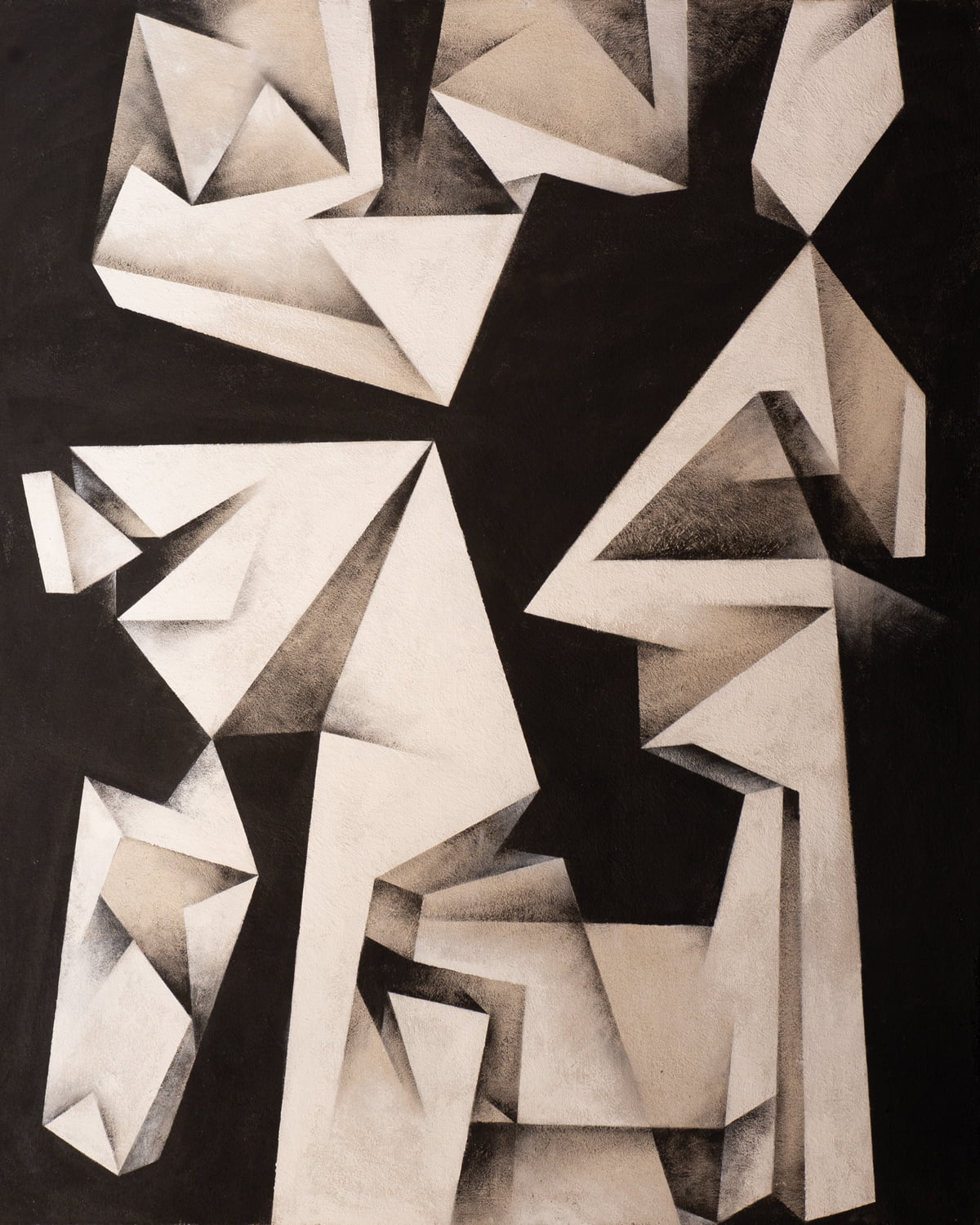The room dedicated to Nane Zavagno seeks to provide the spectator with the full view of the long career of the artist from Friuli Venezia Giulia. In fact, the four works that are presented testify to the artist’s activity in both paintings and sculpture, equally important in terms of his very versatile artistic production, and highlight similarities and convergences in his artworks, created with different materials.
At Palinsesti, two sculptures can be admired, both made in the first decades of the 2000s. The small iron sculpture consists of two modular elements shaped as a thunderbolt, which intersect at the highest point, creating a semicircle staggered on two different levels, hollow on the inside and only defined by its perimeter. Despite its small dimensions, it still resonates with the monumental nature typical of Zavagno’s works: even in this case, one could imagine the sculpture being transformed into a bigger installation. The idea of monumentality particularly characterises the second sculpture (2001), which constitutes the perspective and visual crux of the whole exposition. This installation consists of three different iron mesh modular blocks with well-defined geometric volumes, following a structure typical of the last decades of Zavagno’s work. The three modules are defined by regular straight and curved lines, which create three elements of different dimensions that recall the members of a family: a real Holy family translated into the more abstract form of sculpture. The most suggestive and personal characteristic of the sculpture consists of the contrast between the volumetric structure of the whole and the transparency of the surface, made possible by the iron mesh. This enables a total permeability; the gaze of the spectator goes through the structure, which is in close connection with the surrounding space. The texture of the structure, thanks to the mesh, creates a living and complex dialogue with the light and with the viewer’s gaze, resulting in an ongoing process of becoming. The essential volumes, sculpturally proposed by Zavagno, and the modular systems that come from his artistic experiences inspired by optical art, enter into relation with the organic concept of nature. On many occasions, these kinds of installations were placed outdoors, creating a close relationship with the surrounding environment, without filters. As Enrico Crispolti observed in the introduction to the catalog of a retrospective of Zavagno’s art held in 2012: «The new structures no longer hide […] the environmental components (buildings, landscapes, etc), but I would rather say that they enclose them, each time, in different ways and in different (occasional) semantic intentions».
As can be seen, monumentality is also achieved on canvas: if we observe carefully, Zavagano’s experiments with acrylic painting do not differ from those pursued within the three-dimensionality of sculpture. As the spectator can see in the large horizontal painting of 2005, the same monumental volumetric structures encountered in the sculpture are transferred onto the two-dimensional space of the canvas and reduced into the two-tone of black and white. Once again, Zavagno’s geometric, almost architectural forms tend to recall the organic world, which have led many critics and art historians to see elements recalling the sexual organs in these figures. In the second painting from 2020, a series of pyramidal irregular figures overlap one over the other, standing out against the surface of the canvas almost like mountain peaks. Painted with the usual two-toned effect obtained by the use of black and white, the abstract figures appear to be extremely plastic thanks to a clever and persistent use of shadowing.

